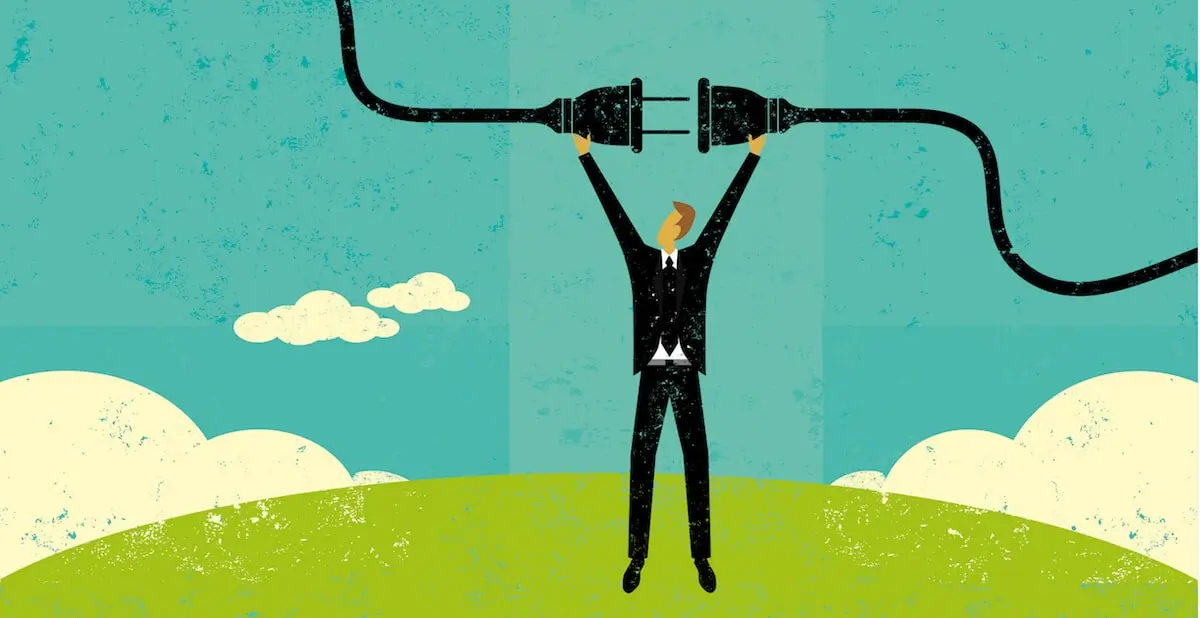If you find yourself daydreaming about a new career path, but struggling to turn it into a reality, then you’re probably in the same position I was in. I spent too much time and energy worrying ‘what if’, rather than investing that energy into planning my career goals and becoming what I wanted to be.
Eventually, with the help of some inspiring people, I managed to identify the 5 main career obstacles I was facing. Once I knew what they were, I was able to tackle them head on. I enrolled on the UX Design Course at CareerFoundry and I now love working as a UX designer.
Here’s how I got there.
They say you regret the things you don’t do, more than you regret the things you do. This applies to many areas of life, but it’s especially true about your career. What you do for a living shapes the way you think and the way you live your life.
With the retirement age pushing 70, you’re looking at a potential 50 years of working life! So, what does that mean? Firstly, you should find a career path you enjoy. Secondly, it’s never too late to start working towards a new career.
Here are the main obstacles I experienced on my path to finding a new career, and how I managed to get past them and get to where I am today.

1. Fear
I don’t think there is anyone who has never experienced fear of some sort; fear of spiders, fear of heights, fear of asking someone out on a date… the list goes on and on. It’s a totally natural, unavoidable emotion. So although it’s pretty tough to stop fear in its tracks, we can control the effect it has on us.
Had it not been for an inspiring one-to-one I had, I might have got stuck because of fear. Instead, I’m in a job I love, making a good living, all because of one conversation which helped me to shift my attitude. So how did it go?
I was talking to the owner of Empower, Tariq Azim. He asked me what my biggest fear was, when it came to switching careers. I told him. I was worried what would happen if I didn’t make it, and I’d already given up my job. His answer was simple, but he was right, “So what, you will get another job.” He could see that I was letting fear hold me back, and his very matter-of-fact approach helped me to overcome it.
He was totally right! If I hadn’t succeeded as a UX designer, I’m sure I would have found another job. Luckily, I landed a job I really wanted in UX.
2. Our inner voice
I’m sure everyone has experienced a voice in their head, telling them what to do, and what not to do. We can choose to let our inner voice control us, or learn to control our inner voice.
The biggest trap we can fall into is listening to our inner voice, even when it’s our own worst enemy – when it convinces us to make excuses not to do things. It’s our instinct to be cautious, to avoid uncertainty, and to stick to what we know – safe pastures. However, in this day and age, it doesn’t always help us to play it safe.
The main way to tackle this is to realize that you are that voice, and you can take control of that voice. You can train your inner voice to be positive and encouraging, rather than holding you back. You and only you have the inner strength to make the switch.

3. The blame game
I’m going to go ahead and put this out there – we all love to blame other people when things go wrong. It’s an easy way out when things don’t happen the way we had hoped, or if we don’t hear the things we want to hear. We complain, we talk about other people because we are not happy with our own lives.
Like most people, I have been guilty of this. In the past, I would blame other people if things didn’t go my way. Then one day I looked in the mirror and thought hard about it – I decided to make a change.
Once I started to take responsibility for my own actions, I stopped making excuses for myself and blaming other people. As soon as you do this, you’ll realize that you too have a big responsibility to make sure things work out how you want, and you’ll start learning from mistakes and using them to your advantage – to make improvements.
I can guarantee you that things will start to change if you accept that you DO have a stake in how things turn out and you should take responsibility for things.
You’ll start figuring out what measures you can put in place to increase the chances of a desirable outcome, rather than just waiting for things to go wrong and then blaming external factors.

4. Balancing too much
Our life will always be a balancing act – work, meetings, family, friends, even our pets. Whatever it is, we often put other things or other people first. Sometimes we don’t even realize we’re doing it, but it’s really important to recognize when we’re neglecting ourselves a little bit. Having time for yourself is really valuable and sometimes you have to make a real conscious effort to carve the time into our schedule.
We can also feel guilty for taking “me time,” and feel like we should be doing something at all times. What I have learnt from studying, is that “me time” is as valuable an activity as any. We need time to recharge our batteries, to reflect, to come up with ideas, to listen to our needs, in order use the rest of our time efficiently.
I know this one can be really hard, so I would recommend even just setting aside 15 minutes per week to do something entirely for yourself, and then trying to increase this if possible. Once you set aside time to do something you love, you’ll probably find that the window of time you’ve freed up gets bigger and bigger.
It’ll soon become second nature to spend time doing things you love and you’ll start to radiate positive energy. You might find your relationships with loved ones improve, and you’ll be even more productive with work and study. I notice that people who are highly successful in the careers often have a hobby or something outside of work they are really passionate about.
There are 24 hours in a day, so don’t make excuses – you can always find 15 minutes to focus on something purely for yourself. Try it!

5. Forgetting to stay positive
Finally, it seems so obvious, but it’s something that we can so easily let go of when we experience a minor setback. You could be feeling fine, then miss your train and decide there and then that “today is a bad day.” Don’t let little things get you down. As I like to say – aloha is all around us! In Polynesian culture, aloha is a way of life for us. It’s all about positivity; positive thoughts and feelings which in turn result in positive interactions and positive experiences. If we forget this, we can get into the habit of seeing things negatively.
If we want to see grumpy people, we will. Everyone will seem grumpy to us. Whatever we decide is our reality, it will become our reality. A lot of what we experience is our perception, and – yep there is a pattern emerging – once you realize you can control this, you can start experiencing the world more positively.
Having a negative outlook can really come across, even in job interviews. A candidate who smiles is more favorable to one who doesn’t smile. You’re much more likely to meet your career goals if you approach your journey with positivity. Who wants to spend hours with somebody negative? I know I would much rather surround myself with people who are happy and have a good outlook on life. And that is actually exactly what I did, so here is my final tip to help you to meet your career objectives:
Build a dream team to support you!
It could include friends, family members, your CareerFoundry tutor or mentor, your co-students. Surrounding yourself with like-minded people is a great way to propel yourself towards success.
Once I realized I was ready to overcome my fears and change my career, I knew I had to surround myself with the right people to get me there. People who recognized my talents and my passions and helped me to see them too. People who inspire me, from fellow UX designers, to great writers, speakers, to MMA fighters. To this day, I have a valuable network of people who I can always call upon when I need a helping hand.
My advice to anyone thinking about changing careers is to be bold, be open, never get discouraged, and finally, build yourself a support dream team.
If you’re ready to overcome your fears and start a new career in UX design, check out the course program here.

